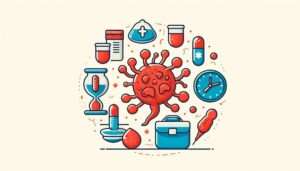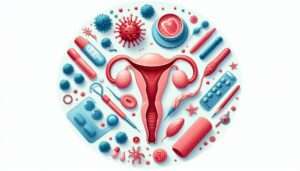Trichomoniasis: Understanding, Preventing and Treating This Common STI
Trichomoniasis, often referred to as “trich,” is a widespread sexually transmitted infection (STI) that affects millions of people worldwide. Despite its prevalence, many individuals are unaware of its existence or its potential impact on their health.
In this comprehensive guide, we’ll explore everything you need to know about trichomoniasis, from its causes and symptoms to prevention and treatment options.
Anal STI Testing: A Comprehensive Guide to Protecting Your Sexual Health

Table of Contents
ToggleWhat is Trichomoniasis?
Trichomoniasis is an STI caused by a microscopic parasite called Trichomonas vaginalis. This single-celled organism primarily infects the genital area, including the vagina, urethra, and prostate gland. According to the Centers for Disease Control and Prevention (CDC), trichomoniasis is the most common curable STI in the United States, with an estimated 3.7 million people infected at any given time.
The State of Sex Education in America: Challenges and Progress
How is Trichomoniasis Transmitted?
Trichomoniasis is primarily spread through sexual contact, including:
1. Vaginal sex
2. Sharing sex toys without proper cleaning
3. Genital-to-genital contact
It’s important to note that trichomoniasis cannot be transmitted through casual contact, such as hugging, kissing, or sharing utensils.
Understanding STD Incubation Periods: A Comprehensive Guide
Symptoms of Trichomoniasis
One of the challenges in diagnosing trichomoniasis is that many infected individuals don’t experience any symptoms. In fact, up to 70% of people with trich may be asymptomatic. When symptoms do occur, they can vary between men and women.

Symptoms in Women:
– Frothy, yellow-green vaginal discharge with an unpleasant odor
– Itching, burning, or redness in the genital area
https://goshoppk.com/15-compelling-reasons-to-use-condoms/
– Discomfort during urination
– Pain during sexual intercourse
Symptoms in Men:
– Irritation inside the penis
– Burning sensation after urination or ejaculation
– Mild discharge from the penis
It’s crucial to remember that these symptoms can be similar to other STIs or urinary tract infections, so proper diagnosis by a healthcare professional is essential.
Diagnosing Trichomoniasis
If you suspect you might have trichomoniasis, it’s important to seek medical attention promptly. Diagnosis typically involves:
1. Physical examination: A healthcare provider will examine the genital area for signs of infection.
2. Laboratory tests: The most common diagnostic methods include:
– Microscopic examination of vaginal or urethral discharge
– Nucleic acid amplification tests (NAATs)
– Rapid antigen tests
3. Urine test: In some cases, a urine sample may be used to detect the presence of the parasite.
Treatment Options for Trichomoniasis
The good news is that trichomoniasis is curable with appropriate treatment. The most common treatment options include:
1. Antibiotic medication: The primary treatment for trichomoniasis is a single dose of either metronidazole or tinidazole. These medications are typically taken orally.
2. Partner treatment: It’s crucial that all sexual partners from the past two months also receive treatment to prevent reinfection.
3. Follow-up testing: A follow-up test is recommended within three months of treatment to ensure the infection has been cleared.
It’s important to abstain from sexual activity until treatment is complete and all symptoms have resolved. Additionally, alcohol should be avoided for at least 24 hours after taking metronidazole or 72 hours after taking tinidazole to prevent severe nausea and vomiting.
Preventing Trichomoniasis
While trichomoniasis is common, there are several steps you can take to reduce your risk of infection:
1. Practice safe sex: Consistently and correctly use condoms or dental dams during sexual activity.
2. Limit sexual partners: Having fewer sexual partners can decrease your risk of exposure to STIs.
3. Get regular STI screenings: Regular testing can help detect infections early, even if you’re asymptomatic.
4. Avoid sharing sex toys: If you do share, clean them thoroughly or use a new condom for each use.
5. Communicate openly: Discuss sexual health and STI status with your partner(s) before engaging in sexual activity.
Complications of Untreated Trichomoniasis
If left untreated, trichomoniasis can lead to several complications:
– Increased risk of HIV transmission
– Higher susceptibility to other STIs
– Pelvic inflammatory disease (PID) in women
– Infertility issues
– Complications during pregnancy, including premature birth and low birth weight
Trichomoniasis and Pregnancy
Pregnant women with trichomoniasis may be at higher risk for certain complications. These can include:
– Preterm delivery
– Low birth weight babies
– Premature rupture of membranes
If you’re pregnant and suspect you might have trichomoniasis, it’s crucial to consult your healthcare provider immediately. Treatment during pregnancy is generally safe and can help prevent complications.
Living with Trichomoniasis: Emotional and Social Aspects
Being diagnosed with an STI can be emotionally challenging. It’s important to remember that trichomoniasis is common and treatable. Here are some tips for coping:
1. Seek support: Talk to trusted friends, family members, or a counselor about your feelings.
2. Educate yourself: Understanding the infection can help alleviate fears and misconceptions.
3. Practice self-care: Maintain a healthy lifestyle to support your overall well-being.
4. Join support groups: Connecting with others who have experienced similar situations can be helpful.
Conclusion
Trichomoniasis is a common, but treatable STI that affects millions of people worldwide. By understanding its causes, symptoms, and treatment options, you can take proactive steps to protect your sexual health.
Remember, regular STI screenings, open communication with partners, and safe sex practices are key to preventing and managing trichomoniasis and other STIs. If you suspect you might have trichomoniasis or any other STI, don’t hesitate to seek medical attention promptly.
Reference to External Sources:
[1] https://www.cdc.gov/std/trichomonas/default.htm
[2] https://www.who.int/news-room/fact-sheets/detail/trichomoniasis
[3] https://www.ncbi.nlm.nih.gov/pmc/articles/PMC3108032/
[4] https://www.mayoclinic.org/diseases-conditions/trichomoniasis/symptoms-causes/syc-20378609


